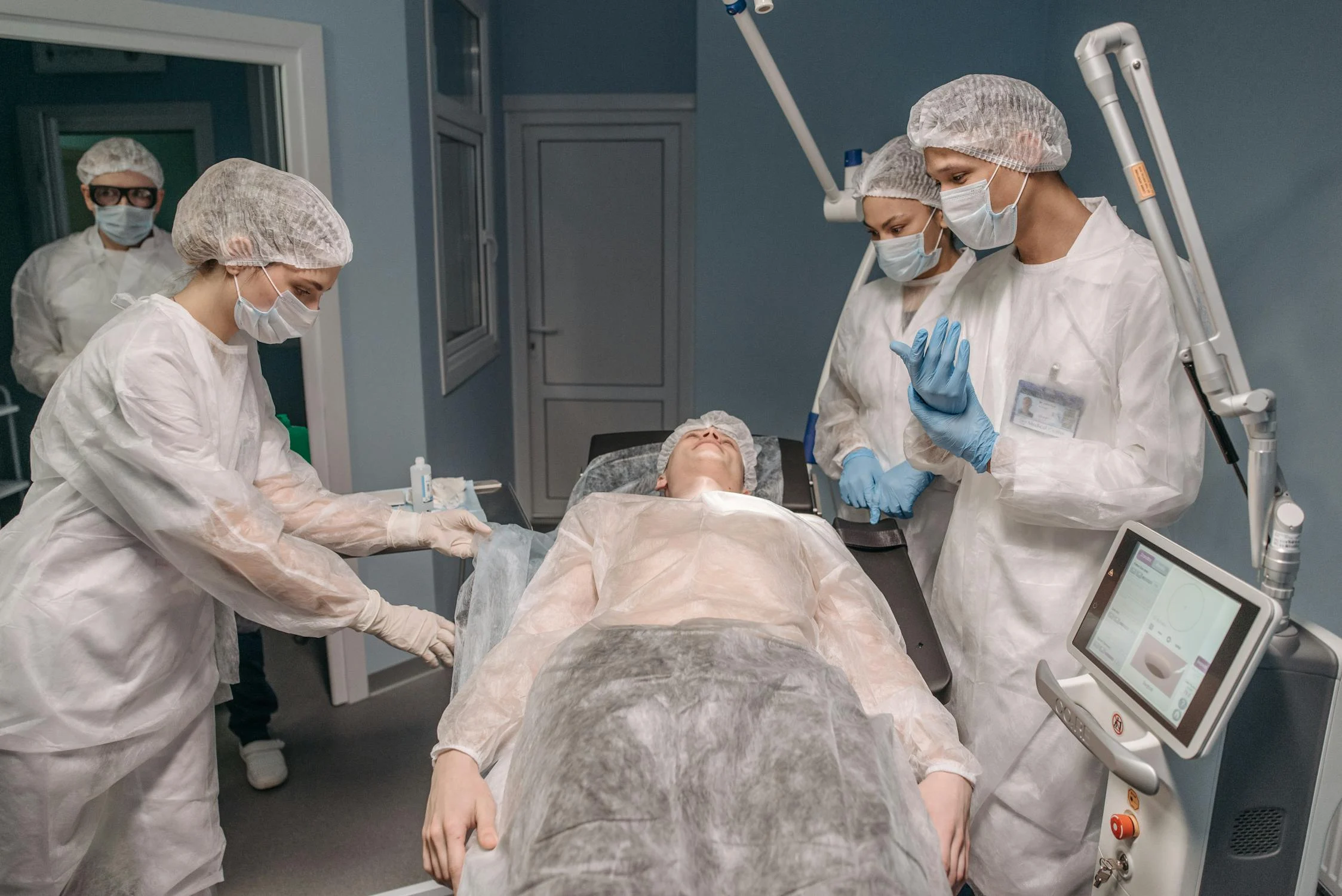Hospital stays can be stressful experiences, and while medical professionals work diligently to provide safe care, medical errors unfortunately occur more frequently than many patients realize. According to healthcare safety experts, preventable medical errors represent a significant concern in hospital settings. However, patients and their families can take proactive steps to reduce the risk of experiencing these errors and ensure safer hospital stays.
Understanding how to advocate for yourself or a loved one during hospitalization is not about distrusting healthcare providers, but rather about becoming an informed partner in the care process. This collaborative approach benefits everyone involved and significantly enhances patient safety outcomes.
1. Understanding Medical Errors in Hospital Settings
1.1 Types of Common Medical Errors
Medical errors encompass a broad range of preventable mistakes that can occur during healthcare delivery. These may include medication errors, such as receiving the wrong drug or incorrect dosage, diagnostic mistakes, surgical errors, infections acquired during the hospital stay, and communication breakdowns between healthcare team members.
1.2 Why Medical Errors Occur
The complexity of modern healthcare means that multiple professionals often care for a single patient, creating numerous opportunities for miscommunication or oversight. Electronic health records, while generally improving safety, can sometimes contribute to errors if information is incorrectly entered or overlooked. Understanding these potential vulnerabilities helps patients prepare to be effective advocates for their own safety.
1.3 The Role of Patient Advocacy
The good news is that many medical errors are preventable through increased awareness, better communication, and active patient participation in the care process. Patients who engage actively in their care and maintain open communication with their healthcare teams experience significantly better outcomes and fewer adverse events.
2. Preparing Before Your Hospital Admission
2.1 Creating a Comprehensive Medical Information Package
Preparation begins well before you walk through the hospital doors. Creating a comprehensive list of all medications you currently take, including prescription drugs, over-the-counter medications, vitamins, and supplements, provides crucial information for your care team. Include dosages, frequencies, and the reasons you take each medication. This information helps prevent dangerous drug interactions and ensures continuity of necessary treatments.
2.2 Documenting Your Medical History
Compile a detailed medical history that includes previous surgeries, chronic conditions, allergies, and adverse reactions to medications. Even seemingly minor allergies or sensitivities should be documented, as they can influence treatment decisions. If you have advance directives or specific preferences about your care, bring copies of these documents and discuss them with your healthcare team.
2.3 Designating a Healthcare Advocate
Consider designating a trusted family member or friend as your healthcare advocate. This person should understand your medical history, preferences, and concerns. Having an advocate becomes particularly important if you become unable to communicate effectively due to illness, medication effects, or medical procedures.
2.4 Gathering Essential Documentation
Gather all relevant medical records, test results, and imaging studies from recent visits to other healthcare providers. These documents provide valuable context for your current condition and help prevent unnecessary duplicate tests or procedures.
3. Effective Communication with Your Healthcare Team
3.1 Establishing Clear Lines of Communication
Clear, consistent communication forms the foundation of safe hospital care. When healthcare providers enter your room, ask them to identify themselves by name and role. Understanding who is responsible for different aspects of your care helps you direct questions to the appropriate team members and ensures accountability.
3.2 Asking the Right Questions
Do not hesitate to ask questions about any aspect of your care. Request explanations about your diagnosis, treatment plan, medications, and procedures in language you can understand. If medical terminology confuses you, ask for simpler explanations. Healthcare providers should be willing and able to explain your care in terms that make sense to you.
3.3 Using the Teach-Back Method
Repeat back important information to confirm your understanding. This technique, called “teach-back,” helps identify and correct any miscommunication before it leads to problems. For example, you might say, “Let me make sure I understand correctly. You want me to take this medication twice daily with food, and I should not take it at the same time as my blood pressure medication.”
3.4 Maintaining Documentation Records
Keep a notebook or use your phone to record important information, including the names of your healthcare providers, medication changes, test results, and discharge instructions. This record helps you track your care progress and provides reference material for future questions or concerns.
4. Being an Active Participant in Your Care
4.1 Understanding Your Treatment Plan
Take ownership of your safety by staying informed and engaged throughout your hospital stay. Ask about the purpose and expected timeline for every medication, test, and procedure. Understanding why each intervention is necessary helps you identify potential errors and participate meaningfully in care decisions.
4.2 Participating in Safety Verification Processes
Before any procedure, confirm that the healthcare team has correctly identified you and the intended procedure. This verification process, known as a “time-out,” should include checking your identification band, stating your name and date of birth, and confirming the specific procedure and body part involved.
4.3 Monitoring Your Own Health Status
Pay attention to your body and report any new symptoms, unexpected changes in your condition, or concerns about your treatment immediately. You know your body better than anyone else, and your observations provide valuable information for your care team. Trust your instincts if something does not feel right.
4.4 Engaging in Daily Rounds
Participate in daily rounds when possible. Many hospitals conduct multidisciplinary rounds where team members discuss your care plan. These discussions provide opportunities to ask questions, clarify information, and ensure that all team members have accurate and up-to-date information about your condition and preferences.

5. Medication Safety Strategies
5.1 Verifying Medication Orders
Medication errors represent one of the most common types of preventable medical errors in hospitals. Before taking any medication, ask the nurse to explain what it is, why you are receiving it, and what side effects you should expect. Compare this information with your understanding of your prescribed medications.
5.2 Confirming Medication Accuracy
Verify that medications match your expectations based on previous discussions with your healthcare team. If a medication looks different from what you have been taking, or if you receive a medication you do not recognize, speak up immediately. Generic medications may look different from brand-name versions, but your healthcare team should be able to explain any differences.
5.3 Understanding Drug Interactions
Be aware of medication timing and interactions. Some medications must be taken with food, while others should be taken on an empty stomach. Certain medications cannot be taken together due to dangerous interactions. Your healthcare team should monitor these factors, but your awareness provides an additional safety check.
5.4 Reporting Adverse Reactions
Report any adverse reactions or side effects immediately, even if they seem minor. Some medication reactions can worsen quickly, and early intervention often prevents serious complications.
6. Infection Prevention Measures
6.1 Hand Hygiene Protocols
Healthcare-associated infections pose significant risks during hospital stays. While hospitals maintain strict infection control protocols, patients can take additional steps to protect themselves. The most effective infection prevention measure is proper hand hygiene. Ensure that all healthcare workers wash their hands or use hand sanitizer before touching you or your belongings.
6.2 Advocating for Proper Hygiene
Do not hesitate to remind healthcare workers about hand hygiene if you do not observe them cleaning their hands. Most healthcare professionals appreciate these reminders, as they understand the critical importance of infection prevention.
6.3 Personal Protective Measures
Keep your hands clean by washing them frequently with soap and water or using alcohol-based hand sanitizer. Pay particular attention to hand hygiene before eating and after using the bathroom.
6.4 Visitor Management
Limit unnecessary visitors, especially those who are ill. While social support is important for recovery, reducing exposure to potential pathogens helps prevent infections. Ask visitors to practice good hand hygiene and follow hospital infection control policies.
7. When and How to Speak Up
7.1 Recognizing When to Voice Concerns
Knowing when to voice concerns is crucial for your safety. Speak up immediately if you notice any discrepancies in your care, experience unexpected symptoms, or feel that something is wrong. Healthcare providers prefer to address concerns promptly rather than deal with complications that might develop from unaddressed problems.
7.2 Escalation Procedures
If you are uncomfortable speaking directly to a healthcare provider, ask to speak with a charge nurse, patient advocate, or supervisor. Most hospitals have formal processes for addressing patient concerns and take these reports seriously.
7.3 Documentation Strategies
Document your concerns in writing, including the date, time, people involved, and specific details about the situation. This documentation helps ensure that your concerns are addressed appropriately and provides a record for follow-up if necessary.
7.4 Professional Advocacy Approach
Remember that advocating for yourself or asking questions does not make you a difficult patient. Healthcare providers generally appreciate patients who are engaged in their care and help identify potential problems.
8. Preparing for Discharge
8.1 Understanding Discharge Instructions
The transition from hospital to home represents a particularly vulnerable time for patients. Ensure that you understand your discharge instructions completely before leaving the hospital. Review all medications, including new prescriptions, changes to existing medications, and medications that should be discontinued.
8.2 Recognizing Warning Signs
Ask about warning signs that should prompt you to seek immediate medical attention. Understanding these red flags helps you identify complications early and seek appropriate care promptly.
8.3 Arranging Follow-up Care
Confirm your follow-up appointment schedule and understand the purpose of each appointment. Make sure you have contact information for your healthcare providers and clear instructions about who to call with questions or concerns.
8.4 Transition Planning
If you need medical equipment or home health services, verify that these arrangements are in place before your discharge. Delays in obtaining necessary equipment or services can lead to complications or readmissions.

Conclusion
Protecting yourself from medical errors during hospital stays requires active participation, clear communication, and ongoing vigilance. While healthcare providers bear primary responsibility for delivering safe care, patients who engage as partners in the process significantly enhance their own safety and outcomes.
Remember that speaking up, asking questions, and advocating for yourself demonstrates responsibility and engagement rather than distrust. Healthcare providers generally welcome patients who participate actively in their care and appreciate the additional safety checks that patient involvement provides.
By preparing thoroughly before admission, communicating effectively with your healthcare team, staying informed about your care, and maintaining awareness of potential safety issues, you can significantly reduce your risk of experiencing medical errors during your hospital stay. These strategies not only protect your safety but also contribute to a more positive and successful healthcare experience.



